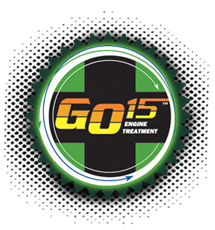Tires are a vital part of every car and how one billion cars get from point A to point B. Some of these truths and myths make sense, they are the ones we have heard of but some will surprise you on how crazy they are and how we never knew that before. So what are these crazy tire myths and the truths about them you ask, keep reading to find out.
 Crazy tire myth number one:
Crazy tire myth number one:
Car manufactures and tire manufactures have printed on the inside of the car or on the outside of the tire on how full to fill your tire, this is the tire pressure or PSI. But what you probably didn’t know is that it is a myth that tires need to be inflated based on this number. The number provided is actually the maximum that the tires should be filled to, anything more than this and your tire could cause some major accidents or even burst.
Crazy tire myth number two:
Another crazy tire myth is that lowering the tire pressure will better the grip you get on wet surfaces. This is actually really dangerous because then the tire grooves that are there to help disperse the water actually trap the water in the tire giving you less grip on the road and giving the potential risk of hydroplaning or having your car lock up; become a greater possibility.
Crazy tire myth number three:
During the summer time, the air in tires expands due to high temperatures and thus tire pressure should be reduced by a few PSI. This is a big myth, since the rubber on the tires keeps the heat from getting in. The air pressure inside the tire will stay the same temperature if the pressure stays the same. However, if you do reduce the tire pressure the temperature of the tire pressure will heat up since there is less pressure which will cause the tire walls to flex or bend. We advise you to maintain the company recommended PSI even during summer months.
Crazy tire myth number four:
Tire pressure should be reduced in the winter months to improve handling. As we just mentioned, you should not reduce the tire pressure in the summer and you should never reduce the tire pressure in the winter either. In fact, during the winter time you should increase the tire pressure by 2 PSI for every 3-4 degree drop in temperature.
Crazy tire myth number five:
Winter tires are only required during snowfall. This one is a simple one, if you stay in a place where the temperature is below 10 degrees we suggest winter tires for the sole purpose of they are better equipped to handle extreme cold than regular tires are. Even if it isn’t snowing there or it never snows there, if the temperature drops below 10 degrees you should have winter tires on.
Crazy tire myth number six:
Valve caps are used to prevent the tire from losing pressure. This one is one of the craziest but the truest tire myths at the same time. Valve caps are used to prevent dust, water, mud and other things from getting into your tire and causing air pressure loss. So you could make the assumption that valve caps are used to prevent tire air pressure loss but you would be missing the crucial point as to how the tire would lose the air pressure.
 Not only will the tires help your car become more efficient but so will GO15. When you use GO15 engine treatment there is an improvement in the ring to cylinder wall seal. This reduces gas blow-by, increases compression and therefore delivers more power and less fuel wasted. In effect, GO15 creates a Higher Combustion Efficiency resulting in improved mileage and performance.
Not only will the tires help your car become more efficient but so will GO15. When you use GO15 engine treatment there is an improvement in the ring to cylinder wall seal. This reduces gas blow-by, increases compression and therefore delivers more power and less fuel wasted. In effect, GO15 creates a Higher Combustion Efficiency resulting in improved mileage and performance.
No matter where you are in the world and what the weather is like there, you should always check your tire pressure once a week to make sure you have no leaks and you are driving safely everywhere you go. And, don’t forget the GO15 in your car to help it run smoother and more efficiently.